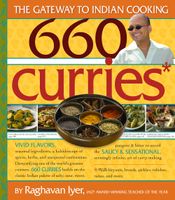Advertisement
Oils, liquids, thickeners, and stabilizers
Appears in
Published 2008
When I think about curry as a structure, I look at these ingredients as its essential building blocks (its infrastructure) while the spices, herbs, and other flavorings are what make the house a home. You can’t have one without the other.
The dribbling of oil into a pan usually is the start of a curry buildup. Sometimes the oil is insignificant from a flavor standpoint, its role being that of a provider of fat to sear ingredients. Flavorless oils with a high smoke point (the temperature at which oil starts to smoke) are essential for sizzling whole spices and searing meat, fish, and poultry before we stew them in sauce. Vegetable-based oils, including canola (which is not rapeseed oil, although it is often described that way), work perfectly for this. Low in saturated fats, they also have a reuse quality that I like, especially when I deep-fry nonmeat ingredients (meats leach a lot of liquid into the oil, lowering its smoke point). Peanut and corn oil also work well for this purpose, but if you are allergic to peanuts, it’s best to avoid the oil too. I recently sampled rice oil and found it to be part of this “flavorless” category, and since it is rich in antioxidants, contains no trans fat, and has a smoke point of 490°F, it too suits my cooking style, although I don’t find it readily available.


